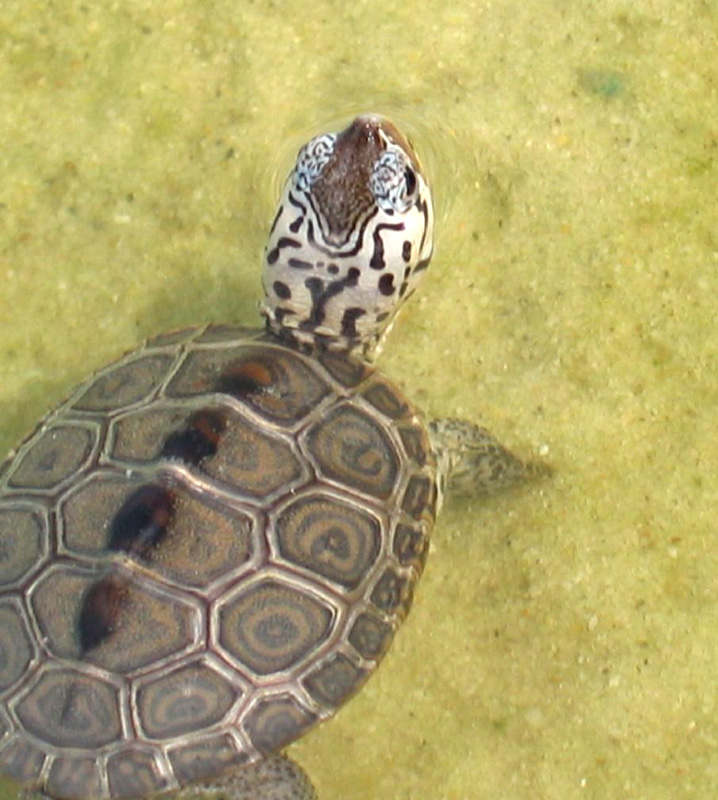Diamondback terrapin turtle; photo by laogooli on Flickr (use permitted with attribution / share alike).
Official State Reptile of Maryland
Maryland designated the diamondback terrapin turtle (Malaclemys terrapin) as the official state reptile in 1994. The diamondback terrapin turtle is also the official mascot of the University of Maryland College Park. In 2002 the University began to donate a portion of proceeds from the sale of "Fear the Turtle" merchandise to fund terrapin research and conservation efforts. All State Reptiles
Diamondback Terrapin Turtle Facts
The Diamondback terrapin is the only species of turtle in North America that spends its life in brackish water (salty, but less salty than sea water). Their preference for unpolluted saltwater make the diamondback terrapin an indicator of healthy marsh and river systems.
Chesapeake colonists ate the diamondback terrapin turtle roasted whole in live coals (as the native-Americans did). Terrapins were abundant and easy to catch, and landowners often fed slaves and indentured servants a staple diet of terrapin turtle meat.
In the 19th century, the terrapin turtle began to be considered a gourmet food. In 1891, approximately 89,000 pounds of terrapin were harvested from Maryland waters. With few exceptions, annual harvests since 1956 have remained below 11,000 lbs. But as a result of the tremendous retail demand and heavy fishing of the terrapin, this unique creature was nearly eliminated. Maryland has acted to protect Diamondback Terrapins. Effective July 1, 2007, it is unlawful to take or possess them for commercial purposes.
Commercial fishing is not the only problem the diamondback terrapin turtle faces. Eggs and hatchlings are preyed upon by a wide variety of animals including crabs, crows, gulls, rats, muskrats, foxes, raccoons, skunks, and mink. Terrapin eggs also are destroyed by the invasion of introduced beach grass. Survival rates during the first year are estimated as low as 20%.
Chesapeake diamondback terrapin turtles are distinguished by diamond-shaped, concentric rings on the scutes of their upper shells ranging in color from medium gray or brown to nearly black.
Diamondbacks are adapted to eat hard-shelled prey including aquatic snails, crabs, and small bivalves (such as blue mussels). They also eat carrion, fish, marine worms, and plant material. In winter they hibernate underwater in mud. Diamondback terrapins emerge about the end of May to mate, nest, and bask in the sun on coastal dunes or narrow sandy beaches.

